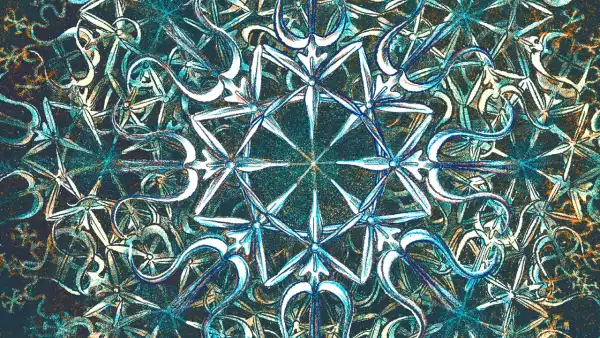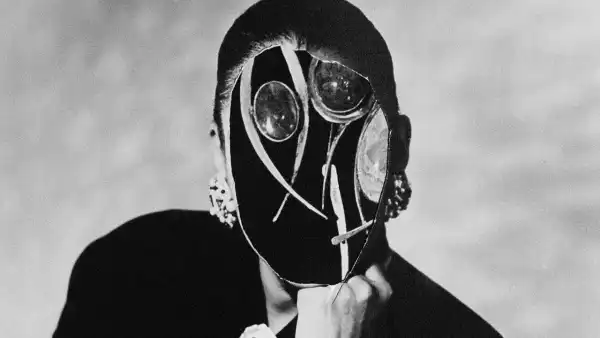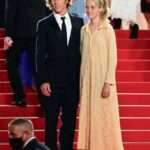
Save this storySave this storySave this storySave this story
Have you ever depleted your reading material mid-flight? It happened to me once, and, while I was poking around in the seat pocket to see if there was something to amuse me, I stumbled upon a tale that would capture my interest for years to come. A prior traveler had left behind a copy of the Miami Herald, barely a day old, nestled between the safety instruction card and the airsickness bag. As I absentmindedly leafed through it, my eye was caught by an account concerning a local horticulturalist named John Laroche and three Seminole individuals, all apprehended for the theft of uncommon orchids from a Florida wetland. It was a mere fragment of a story, yet I found it captivating, drawn in by the convergence of “wetland,” “orchids,” “Seminoles,” “plant cloning,” and “criminal” in a single narrative. I journeyed to Miami for the opening hearing in the matter and later published “Orchid Fever” in The New Yorker in January of 1995.
Certain narratives reach their conclusion and end: they offer a concise, enjoyable journey that concludes feeling both complete and satisfying. Yet, the orchid story persisted in my thoughts. It remained with me even after Laroche informed me of his transition from the botanical world to a venture in online pornography. I felt certain that there was a book to be found within it. I went back to Florida, dedicating three more years to the narrative, and ultimately released it as “The Orchid Thief” in 1998.
The producer and director Jonathan Demme had expressed interest in securing the rights to “Orchid Fever” upon its release. I was taken aback. The narrative possessed such an unconventional nature and unfolded at such a deliberate tempo that I struggled to envision it as a cinematic piece. Regardless, I was hesitant to allow a movie adaptation before the book’s completion, so I conditioned the sale of film rights on his willingness to wait. He consented, leading me to accept his proposition. Once the book was finalized, my agent, Richard Pine, forwarded copies to Demme and Ed Saxon, his producing associate. Initially intending to direct the project himself, Demme opted to entrust the directorial role to Spike Jonze, recognized at the time for his work on music videos. Charlie Kaufman, freshly off his work on “Being John Malkovich,” was slated to pen the screenplay. The notion that “The Orchid Thief” would be transformed into a Hollywood creation struck me as far-fetched. But why not relish discussing it? Following the film team’s acquisition of the book, communication waned for several months, causing me to presume that the “Untitled Orchid Thief Project” would founder, as many films do during their preliminary phases.
However, this wasn’t the case, and, on one occasion, during a lunch in the Village, Ed presented me with Kaufman’s script. “It deviates a bit from the book,” he said. “There are figures within the script who don’t appear in your book. However, we’re quite enthusiastic about it and hope you will like it.” I returned to my workspace at The New Yorker. I perceived no urgency in perusing the script, but I took it from its casing and glanced at the title page. To my disappointment, it was not titled “The Orchid Thief.” Rather, it read “Adaptation.” And it credited two screenwriters—Charlie and Donald Kaufman. Right, I figured Charlie Kaufman must have a sibling? I flipped through a handful of pages and landed on a scene featuring myself as a child with my parents. What? Another scene showcased a fabricated romantic entanglement between John Laroche and myself, which was not only mortifying but, if it had indeed taken place, would have constituted a breach of journalistic principles. What I didn’t grasp at the time was that, after grappling for some time with the challenge of adapting material lacking a defined narrative arc into a film while honoring its essence, Kaufman had devised the strategy of embedding a fictional movie within a narrative about the film’s creation. He believed he could genuinely pay tribute to the book while simultaneously offering a biting portrayal of the Hollywood machinery, which would inevitably seek to amplify the narrative with elements of sex, narcotics, and melodrama. He spared no one, and his own representation, as a bumbling, self-pitying artist who uses my author portrait as inspiration for masturbation, stands as perhaps the most scathing of all.
My assumption had been that the script would center on Laroche. I had no desire to be depicted as a character in any movie, especially not in the way I was portrayed in Kaufman’s script. I conveyed my concerns to Ed, asserting that, at the very least, they couldn’t utilize my genuine name. He countered by noting that all the other real individuals depicted had consented to the use of their names—including, ostensibly, my parents, whom he had already reached out to. He also made the most persuasive argument: given that the book itself is a character in the film, would I truly prefer that another person—Nancy Jones? Jennifer Stevens?—be credited as its author, even fictionally? The prospect stung my vanity. I stated that I would consider it. I sought the opinions of friends, who all urged me not to endorse the film. And then, I can’t pinpoint what occurred, but I had a change of heart. I began to perceive the situation as being offered a ticket for a peculiar theme-park ride, one that I might later regret forgoing. That perspective was typical of my life—the inclination to accept even when the repercussions were uncertain. I recall signing the release form and reflecting on the whimsical nature of existence.
I didn’t stay closely attuned to the developments surrounding “Adaptation,” as I was immersed in my own projects and, quite frankly, didn’t anticipate much beyond the usual Hollywood fanfare. I was astonished when Ed invited me to his production offices to engage in casting discussions. This lent the film a sense of reality that I hadn’t previously imagined. The producers expressed particular interest in my personal vision of who should play me. My mind drew a blank. “Red hair!” someone suggested. “Julianne Moore!” Another suggested, “Jodie Foster”—fair hair, but she could color it. We joked and speculated for a while. It seemed like a party game, name-dropping performers, as if merely mentioning their names could materialize them within your film. At last, someone proposed, “Meryl Streep.” What a ridiculous notion: the nation’s most esteemed actress in this peculiar movie.
As it happened, I did have a fleeting connection to Streep. During my sophomore year of college, while home in Cleveland for the holidays, my friend Lisa inquired if I would be interested in being an extra in a movie being filmed in the city. I hadn’t encountered the director’s work before, and the title, “The Deer Hunter,” sounded absurd to me. I was also unfamiliar with the actors involved, with the exception of Robert De Niro, who had recently starred in “Taxi Driver.” However, with limited alternatives, I agreed to participate. For approximately six hours, within a Russian Orthodox cathedral situated in a working-class Cleveland neighborhood, we assumed the roles of wedding guests for the characters Steve (John Savage) and Angela (Rutanya Alda). The wedding ensemble included Christopher Walken, John Cazale, and Streep. The scene was filmed and refilmed repeatedly, which perplexed me, given my inexperience on film sets. I didn’t anticipate any significant outcome from the film or its participants. Following its release in 1978, “The Deer Hunter” garnered Oscars for Best Picture, Best Director, Best Film Editing, Best Sound, and, for Walken, Best Supporting Actor. It wasn’t the inaugural—nor the concluding—instance in which my predictions proved somewhat flawed.
By the time “Adaptation” underwent casting, Meryl Streep was a dominant presence in Hollywood. The film represented a departure from her past roles, yet she later shared with me that her children had enjoyed the script and pressured her to accept the role, which she ultimately did. Nicolas Cage was rumored to be contemplating portraying Charlie and his fictitious twin, Donald. Several actors contended for the opportunity to embody the Kaufman brothers. During the casting phase, I happened to be at a film screening in New York, seated beside John Turturro. We exchanged greetings and introductions. He identified my name and passionately advocated for his selection to play the Charlie/Donald roles. Ultimately, though, Cage was chosen for the role—that is, for both roles.
My most enjoyable experience during the film’s preparatory stages was the afternoon spent with the movie’s costume creator, Casey Storm. He wished to examine my wardrobe so as to appropriately dress the fictional Susan Orlean. At the time, I leaned toward vaguely gothic designs. I welcomed Casey at the threshold of my apartment, dressed in a Comme des Garçons dress—black wool with straps and buckles—hoping that he might design something akin to it for Streep to wear in the film. Over the following hour or so, I displayed my favored ensembles. However, as the afternoon drew to a close, he informed me, “We need to make the journalist appear as a journalist.” In other words, he would not be incorporating any of my clothing.
I had supposed that I would, at a minimum, meet with Streep so that she might observe my mannerisms and adopt my Ohio inflection. I tidied up my office at The New Yorker, anticipating a call any day announcing her impending arrival. I mentioned it to friends at work—something to the effect of “Oh, Meryl Streep may be dropping by, just in case you spot a stranger wandering around,” and tried to envision which of my actions she might focus on. Time elapsed. More time passed. Eventually, I contacted Ed to inquire when Meryl would be coming to see me. He explained that it wasn’t necessary, as she had already shaped the character on her own.
Production on “Adaptation” commenced in 2001, and that spring, I received an invitation to participate as an extra. They were scheduled to film a scene situated in a grocery store, in which Charlie, played by Cage, overhears two women whispering about how peculiar he appears. I was given the opportunity to be one of the whisperers. I was taken aback upon arriving at the soundstage. My book had felt like such a personal undertaking—crafted in the solitary, often burdensome stillness at my desk—but now it had evolved into a miniature city, an industrial complex, with throngs of crew members scurrying about, and an array of trucks, dressing-room trailers, and concession stands. Aside from that single day in Cleveland, this marked the sole instance I’d spent on a film set, and it was the first occasion I’d witnessed something of my own being translated from the written page into a three-dimensional, fictitious reality.
My husband, John Gillespie, had accompanied me to L.A., and upon our arrival on set, a scene was being filmed in which Charlie meets with an executive. Several individuals were circulating, tidying up the area, refining Cage’s makeup. I noticed a slim figure with a mass of curly hair standing a few feet away from me: the real Charlie Kaufman. I stammered and extended a greeting, adding, “This is rather awkward for me.” “It’s even more awkward for me,” he responded, and then abruptly exited. I don’t recall seeing him on set again during the rest of my time in Los Angeles. In any case, I was engrossed in my role as an extra; we filmed the scene, but ultimately it was removed. Unexpectedly, John was enlisted to play David Remnick, the editor of The New Yorker, in a scene set within the magazine’s offices, faithfully recreated under the sweltering Hollywood skies. That one, too, was cut.
Once a preliminary version of the film was prepared, I received an invitation to view it with a select group, including Spike Jonze’s mother and a French film distributor. En route to the screening, I began to feel apprehensive. Why had I agreed to this? Was it too late to reverse my decision? I contacted my agent, who clarified that it was unequivocally too late to reconsider. I sat through the screening in a stupor. Did I enjoy the movie? At that moment, I struggled to fully grasp it all. It seemed protracted, and the music hadn’t yet been incorporated, nor had the color been corrected. And watching Meryl Streep, projected onto a nine-foot screen, proclaim “I’m Susan Orlean” was a disorienting experience.
I finally encountered her a few months later, at a viewing of the finalized film in New York. After it ended, I moved toward the lobby and felt a hand on my shoulder: Meryl Streep. “Susan!” she exclaimed. “Will you forgive me?” We shared a laugh at the absurdity of the moment. A few weeks before the official premiere, I had another encounter with Kaufman, when “Adaptation” was nominated at the National Society of Film Critics awards. We were positioned next to each other at the awards banquet, and, after some initial hesitancy, we began to converse. He was subdued and elfin, self-effacing, and affable. The film was garnering favorable early reviews, suggesting that his significant gamble—my significant gamble as well, in a different regard—appeared to be yielding results.
The formal premiere took place in Los Angeles, on December 3, 2002, at the venerable Mann Village Theatre in Westwood, adjacent to U.C.L.A., complete with limousines, a red carpet, an after-party—all the flamboyant hallmarks of Hollywood. The actual John Laroche was present, alongside the fictional portrayal, embodied by Chris Cooper (who later secured an Oscar for his performance). Tilda Swinton, who portrayed an industry executive, was in attendance, as was the genuine screenwriting instructor Robert McKee, who doesn’t feature in the book but plays a key role in the film, and Brian Cox, who portrayed him. I faced a question uncommon for a journalist: What does one wear on a red carpet? I ultimately chose a Jean Paul Gaultier gauze top and skirt in shades of green and blue, embellished with a bejeweled depiction of what resembled a Renaissance saint.
The film had transitioned from the chaotic, illogical iteration I’d initially seen into a witty, insightful, and reflective work of art. Wishing to freshen up before the house lights came on, I reached into my bag and nervously applied several layers of lipstick in the dark. Unknowingly, I had coated my lips with a vibrant, almost aggressive purple. I don’t recall ever purchasing such a shade. I only noticed it and wiped it off an hour later, upon seeing my reflection. Unfortunately, I had spent the intervening time wandering around looking rather clownish.
The celebration was staged near the theatre, at the Hammer Museum. The gathering was replete with Hollywood figures; it was as if the movie community couldn’t resist a film that lampooned it so cleverly. At one juncture, I was standing at a table alongside Tilda Swinton, Brian Cox, John Laroche, and Marianne Leone, Chris Cooper’s spouse. It was stimulating, enjoyable, and surreal. The subsequent night, when the film was released to the public, Charlie, Spike, and I arranged to meet and ventured from cinema to cinema throughout Los Angeles, positioning ourselves at the rear to gauge the audience’s reactions. Upon hearing laughter at the appropriate moments, we departed and headed to the next showing. An article about the movie had posed the question, “Was there ever a bestseller less likely to make it to the screen?” but the initial indication was that it was a success.
As “Adaptation” circulated throughout the world, I was struck by the contrast between launching a book and releasing a movie. A film’s cultural impact is so powerful and far-reaching that it can almost eclipse the importance of the book on which it is based. Some of my readers disliked the film and were angered that I had permitted “The Orchid Thief” to be adapted in such a way. My response was to remind them that the content of the book remained unaltered, irrespective of the film’s interpretation. I also attracted numerous new readers who had been previously unaware of the book but became intrigued after seeing the film—undoubtedly a positive outcome. Having a book optioned is often regarded as evidence of its intrinsic value rather than as an indication that a filmmaker recognizes something within it that could translate to the screen. Poor books have been transformed into superb movies, and many superior books have been mangled on the screen. They are distinct but interconnected entities, akin to siblings who share DNA but pursue divergent paths.
Being a character in a movie signifies—what precisely? I’ve never devised a clear response. It was peculiar, disorienting, unsettling, entertaining, and rewarding. It resembled riding in the sidecar of a swift motorcycle. We perceive books as exquisite, significant, valuable, and profound, yet we view movies as dreamlike. Being represented onscreen transports you permanently into an alternative, more captivating realm. ♦
This is excerpted from “Joyride: A Memoir.”
Sourse: newyorker.com







